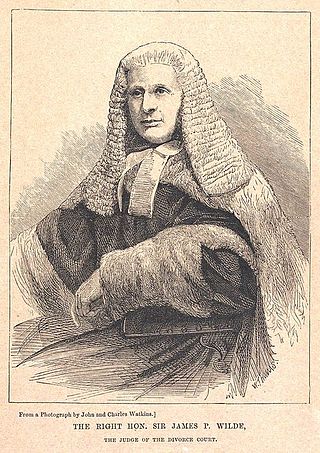Related Research Articles
Polygamy is the practice of marrying multiple spouses. When a man is married to more than one wife at the same time, sociologists call this polygyny. When a woman is married to more than one husband at a time, it is called polyandry. In sociobiology and zoology, researchers use polygamy in a broad sense to mean any form of multiple mating.

Polygamy was practiced by leaders of the Church of Jesus Christ of Latter-day Saints for more than half of the 19th century, and practiced publicly from 1852 to 1890 by between 20 and 30 percent of Latter-day Saint families.

Mormon fundamentalism is a belief in the validity of selected fundamental aspects of Mormonism as taught and practiced in the nineteenth century, particularly during the administrations of Joseph Smith, Brigham Young, and John Taylor, the first three presidents of the Church of Jesus Christ of Latter-day Saints. Mormon fundamentalists seek to uphold tenets and practices no longer held by mainstream Mormons. The principle most often associated with Mormon fundamentalism is plural marriage, a form of polygyny first taught in the Latter Day Saint movement by the movement's founder, Smith. A second and closely associated principle is that of the United Order, a form of egalitarian communalism. Mormon fundamentalists believe that these and other principles were wrongly abandoned or changed by the LDS Church in its efforts to become reconciled with mainstream American society. Today, the LDS Church excommunicates any of its members who practice plural marriage or who otherwise closely associate themselves with Mormon fundamentalist practices.
Many laws in the history of the United States have addressed marriage and the rights of married people. Common themes addressed by these laws include polygamy, interracial marriage, divorce, and same-sex marriage.
The status of women in Mormonism has been a source of public debate since before the death of Joseph Smith in 1844. Various denominations within the Latter Day Saint movement have taken different paths on the subject of women and their role in the church and in society. Views range from the full equal status and ordination of women to the priesthood, as practiced by the Community of Christ, to a patriarchal system practiced by the Church of Jesus Christ of Latter-day Saints, to the ultra-patriarchal plural marriage system practiced by the Fundamentalist Church of Jesus Christ of Latter-Day Saints and other Mormon fundamentalist groups.

The 1890 Manifesto is a statement which officially advised against any future plural marriage in the Church of Jesus Christ of Latter-day Saints. Issued by Church President Wilford Woodruff in September 1890, the Manifesto was a response to mounting anti-polygamy pressure from the United States Congress, which by 1890 had disincorporated the church, escheated its assets to the U.S. federal government, and imprisoned many prominent polygamist Mormons. Upon its issuance, the LDS Church in conference accepted Woodruff's Manifesto as "authoritative and binding."

Reynolds v. United States, 98 U.S. 145 (1878), was a Supreme Court of the United States case that held that religious duty was not a defense to a criminal indictment. Reynolds was the first Supreme Court opinion to address the First Amendment's protection of religious liberties, impartial juries and the Confrontation Clauses of the Sixth Amendment.

Reference Re Same-Sex Marriage [2004] 3 S.C.R. 698, 2004 SCC 79, was a reference question to the Supreme Court of Canada regarding the constitutional validity of same-sex marriage in Canada. The ruling was announced December 2004, following arguments made two months prior.

James Plaisted Wilde, 1st Baron Penzance, was a noted British judge and rose breeder who was also a proponent of the Baconian theory that the works usually attributed to William Shakespeare were in fact written by Francis Bacon.
Sexuality has a prominent role within the theology of the Church of Jesus Christ of Latter-day Saints, which teaches that gender is defined in the premortal existence, and that part of the purpose of mortal life is for men and women to be sealed together, forming bonds that allow them to progress eternally together in the afterlife. It also teaches that sexual relations within the framework of opposite-sex marriage are healthy, necessary, and ordained of God.

The Edmunds Act, also known as the Edmunds Anti-Polygamy Act of 1882, is a United States federal statute, signed into law on March 23, 1882 by President Chester A. Arthur, declaring polygamy a felony in federal territories, punishable by "a fine of not more than five hundred dollars and by imprisonment for a term of not more than five years". The act is named for U.S. Senator George F. Edmunds of Vermont. The Edmunds Act also prohibited "bigamous" or "unlawful cohabitation", thus removing the need to prove that actual marriages had occurred. The act not only reinforced the 1862 Morrill Anti-Bigamy Act but also made the offense of unlawful cohabitation much easier to prove than polygamy misdemeanor and made it illegal for polygamists or cohabitants to vote, hold public office, or serve on juries in federal territories.
Polygamy is the practice of having more than one spouse at the same time. Specifically, polygyny is the practice of one man taking more than one wife while polyandry is the practice of one woman taking more than one husband. Polygamy is a common marriage pattern in some parts of the world. In North America, polygamy has not been a culturally normative or legally recognized institution since the continent's colonization by Europeans.

Possibly as early as the 1830s, followers of the Latter Day Saint movement, were practicing the doctrine of polygamy or "plural marriage". After the death of church founder Joseph Smith, the doctrine was officially announced in Utah Territory in 1852 by Mormon leader Brigham Young. The practice was attributed posthumously to Smith and it began among Mormons at large, principally in Utah where the Church of Jesus Christ of Latter-day Saints had relocated after the Illinois Mormon War.
Polygamy is "the practice or custom of having more than one wife or husband at the same time." Polygamy has been practiced by many cultures throughout history.

Joseph Smith, the founder of the Latter Day Saint movement, privately taught and practiced polygamy. After Smith's death in 1844, the church he established splintered into several competing groups. Disagreement over Smith's doctrine of "plural marriage" has been among the primary reasons for multiple church schisms.
In the Church of Jesus Christ of Latter-day Saints, marriage between a man and a woman is considered to be "ordained of God". Marriage is thought to consist of a covenant between the man, the woman, and God. The church teaches that in addition to civil marriage, which ends at death, a man and woman can enter into a celestial marriage, performed in a temple by priesthood authority, whereby the marriage and parent–child relationships resulting from the marriage will last forever in the afterlife.

Marriage in Australia is regulated by the federal government, which is granted the power to make laws regarding marriage by section 51(xxi) of the constitution. The Marriage Act 1961 applies uniformly throughout Australia to the exclusion of all state laws on the subject.

Early in its history, the Church of Jesus Christ of Latter-day Saints had a series of negative encounters with the federal government of the United States. This led to decades of mistrust, armed conflict, and the eventual disincorporation of the church by an act of the United States Congress. The relationship between the church and the government eventually improved, and in recent times LDS Church members have served in leadership positions in Congress and held other important political offices. The LDS Church becomes involved in political matters if it perceives that there is a moral issue at stake and wields considerable influence on a national level with over a dozen members of Congress having membership in the church in the early 2000s, and about 80% of Utah state lawmakers identifying as LDS.
Polygamy was outlawed in federal territories by the Edmunds Act, and there are laws against the practice in all 50 states, as well as the District of Columbia, Guam, and Puerto Rico. Because state laws exist, polygamy is not actively prosecuted at the federal level.
References
- ↑ Hyde v. Hyde and Woodmansee {L.R.} 1 P. & D. 130.
- ↑ John Hyde Jr. was born about 1833 and converted to the Church of Jesus Christ of Latter-day Saints (LDS Church) in 1848. He was married to Lavinia Hawkins by Brigham Young and worked as a missionary to France. In 1856 he had a change of heart and began to oppose Mormon teaching and left the LDS Church. In his later years. he campaigned in opposition to the LDS Church. He died in 1876.
- ↑ Lavinia, re-married and died on 1 April 1910.
- ↑ Jorgenson, Lyn Watkins (1991), "John Hyde, Jr., Mormon Renegade", Journal of Mormon History , 17: 120–144, JSTOR 23286428
- ↑ Hart, Edward L. (Winter 1976), "John Hyde, Junior—An Earlier View", Brigham Young University Studies , 16 (2), archived from the original on 7 April 2014
- ↑ Hyde, John Jr. (1857), Mormonism: Its Leaders And Designs, New York: W.P. Fetridge & Co., OCLC 414648
- ↑ Warrender v. Warrender 2 Cl. & F. 531. [*135].
- ↑ Ardaseer Cursetjee v. Perozeboye 10 Moo. P. C. 375, 419.
- ↑ Hyde v Hyde casenote Archived 29 March 2014 at archive.today .
- ↑ re Same-Sex Marriage [2004] 3 S.C.R. 698, 2004 SCC 79.
- ↑ Ghaidan v Godin-Mendoza [2004] UKHL 30.
- ↑ Wilkinson v Kitzinger [2006] EWHC 2022 (Fam).
- ↑ Commonwealth v ACT (2013)
- ↑ "Marriage (Same Sex Couples) Act 2013", legislation.gov.uk , The National Archives, 17 July 2013, 2013 c. 30
- ↑ Rebecca Probert, "Hyde v Hyde: Defining or Defending Marriage", Child and Family Law Quarterly, vol. 9. no. 3, 2007, pp. 322–336.